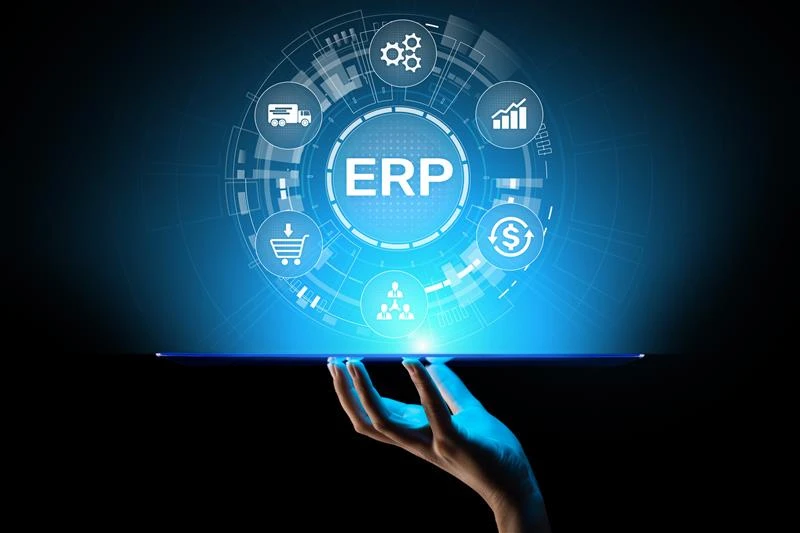Headless ERP Was a Step Forward. Here's What Comes After.
Headless ERP decouples the user interface from core ERP logic, enabling businesses to move faster, scale smarter, and create tailored user experiences without legacy constraints. For IT leaders and tech advisors, it's no longer just a fringe concept, it's a signpost in the broader evolution of enterprise architecture. But while Headless ERP addresses many of the pain points of traditional systems, it’s not always the right fit in practice. For many growing businesses, platforms that apply headless principles pragmatically, through clean APIs, modular integration, and real-time orchestration, may deliver the same benefits without the overhead.
From monolith to modular: A strategic shift
Traditional ERP systems bundle the database, business logic, and user interface into a single stack. That simplicity comes at a cost: every customisation increases technical debt. Upgrades become slower, innovation stalls, and teams are stuck adapting their business to the software instead of the other way around.
Headless ERP flips this model. It separates the “head” (the UI) from the ERP engine, exposing all core functions - inventory, finance, orders, workflows - through APIs. That means front-ends can be swapped, tailored, or built fresh, without disrupting back-end logic.
ERP Today highlights that as AI and UX layers evolve, the ERP front-end may become redundant, prompting a shift toward architectures where back-end ERP functions are accessed via APIs, decoupled from the user interface layer.
For technical decision-makers, this changes the game
Whether you’re guiding ERP procurement or leading a digital transformation, headless ERP introduces major advantages:
- Tailored UX for any role or channel: build mobile apps for field teams, branded customer portals, or analytics dashboards, all drawing from the same ERP APIs.
- Iterate independently: front-end teams can launch improvements without waiting on back-end upgrades or vendor timelines.
- Future-proof integrations: open APIs and modular services mean smoother compatibility with CRMs, eCommerce, finance tools, and more.
Based on MACH Alliance principles, composable architectures allow each component to be pluggable, scalable, replaceable, and continuously improved through agile development.
Where integration-first platforms fit in
While headless ERP defines a valuable direction, not every business needs or wants to build their stack from scratch.
Many are instead turning to integration-first platforms that apply the same decoupled logic, but do so practically, using pre-built integrations, structured modules (like inventory), and flexible workflows that plug into existing tools.
These systems offer:
- Operational structure (like inventory sync, approvals, and data capture)
- Real-time coordination between platforms (like CRMs, job systems, and finance tools)
- API-driven extensibility without locking you into a full ERP suite
Real-world applications: Exsited’s approach
At Exsited, we’ve embedded the key principles of headless ERP - API-first design, composability, and modularity - into a platform that’s designed for integration from day one.
Instead of replacing every system, Exsited connects the ones you already use, while providing a structured operational layer for inventory, data capture, approvals, and sync. In practice, this means:
- Multi-channel inventory sync across platforms like Shopify, Amazon, and in-store POS
- Embedded logic and data capture for approval workflows, service requests, and compliance processes
- Tailored onboarding and interaction portals that collect client or supplier inputs without relying on emails, PDFs, or disconnected forms
- Real-time integration with CRMs (e.g. HubSpot) and accounting platforms (e.g. Xero) to ensure data flows cleanly between sales, operations, and finance
We're not positioning ourselves as a full ERP, and we don’t pretend to replace best-in-class tools like Xero or HubSpot. Instead, we focus on what connects them, and help teams digitise the messy operational layer that lives in between.
What to keep in mind with headless ERP
If you are pursuing a headless ERP model, it’s not plug-and-play. Success depends on how your architecture is planned and maintained. You’ll need:
- API-first culture: Strong documentation, version control, and integration standards
- Modular coordination: More services means more orchestration
- Security & observability: API security, logging, rate limits, and auth layers
- Real-time sync tools: Event-based triggers and queuing to ensure data reliability
These aren’t drawbacks, just realities. And they apply equally to any modern platform trying to deliver the benefits of composable infrastructure.
The takeaway
Headless ERP introduced important ideas, particularly the value of flexibility, modularity, and decoupled systems. But those ideas don’t only live inside ERP systems. They’re now showing up in platforms that are leaner, more adaptable, and designed around integration.
If you’re scaling a business and looking to avoid ERP rigidity, you don’t have to start from scratch. Platforms like Exsited build on the lessons of headless ERP and offer a pragmatic way to get there.
Book a walkthrough or Contact us to talk through your options.










